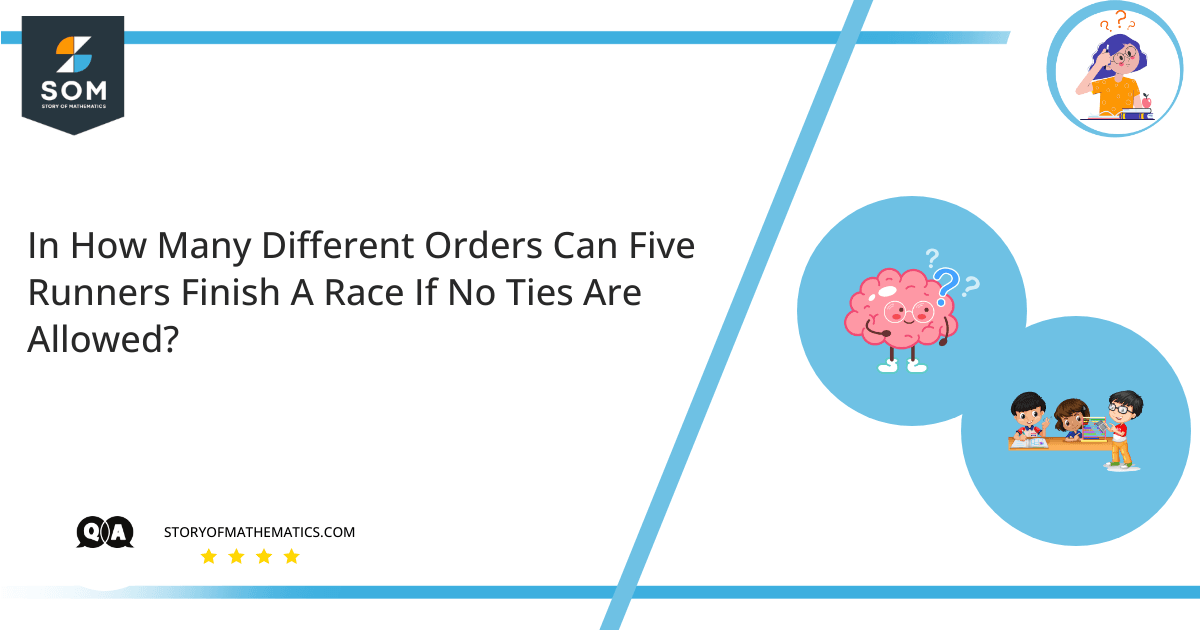
The purpose of this question is to understand the concepts of permutations and combinations for evaluating a different number of possibilities of a given event.
The key concepts used in this question include Factorial, Permutation and Combination. A factorial is a mathematical function represented by the symbol ! that operates only on the positive integers. In fact, if n is a positive integer, then its factorial is the product of all positive integers smaller than or equal to n.
Mathematically:
\[n! = n \cdot (n-1) \cdot (n-2) \_.\_ .\_ 3 \cdot 2 \cdot 1 \]
For example, $4! = 4.3.2.1$ and $10! = 10.9.8.7.6.5.4.3.2.1$
Permutation is a mathematical function used to numerically calculate different number of arrangements of a certain subset of items when order of arrangements is unique and important.
If $n$ is the number of total elements of a given set, $k$ is the number of elements used as a subset to be arranged in a certain order, and $!$ is the factorial function, then permutation can be represented mathematically as:
\[P(n,k) = \frac{n!}{(n-k)!} \]
There is another function used to find the number of such possible subset arrangements without giving attention to the order of the arrangements rather than focusing on the subset elements only. Such a function is called a combination.
A Combination is a mathematical function used to numerically calculate the number of possible arrangements of certain items in a case where the order of such arrangements is not important. It is most commonly applied in solving problems where one has to make teams or committees or groups out of total items.
If $n$ is the number of total elements of a given set, $k$ is the number of elements used as a subset to be arranged in a certain order, and $!$ is the factorial function, the combination can be represented mathematically as:
\[C(n,k) = \frac{n!}{k!(n-k)!}\]
Permutations and combinations are often confused with one another. The main difference is that permutations are order sensitive while combinations are not. Let’s say that we wish to create a team of 11 players out of 20. Here the order in which 11 players are selected is irrelevant, so it’s an example of a combination. However, if we were to seat those 11 players on a table or something in a certain order, then it would be an example of permutation.
Expert Answer
This question is order sensitive, so we will use permutation formula:
\[P(n,k) = \frac{n!}{(n-k)!}\]
Substituting $n = 5$ and $k = 5$ in above equation:
\[P(5,5) = \frac{5!}{(5-5)!}\]
\[P(5,5) = \frac{5.4.3.2.1}{(0)!}\]
\[P(5,5) = \frac{120}{1}\]
\[P(5,5) = 120\]
Numerical Result
There are 120 different orders in which five runners can finish a race if no ties are allowed.
Example
In how many different ways can the letters A, B, C and D be arranged to form two letter words?
Recall the formula of permutations:
\[P(n,k) = \frac{n!}{(n-k)!}\]
Substituting $n = 4$ and $k = 2$ in the above equation:
\[P(4,2) = \frac{4!}{(4-2)!} = \frac{4!}{(4-2)!} = \frac{4.3.2.1}{(2.1)!}\]
\[P(5,5) = 12\]
